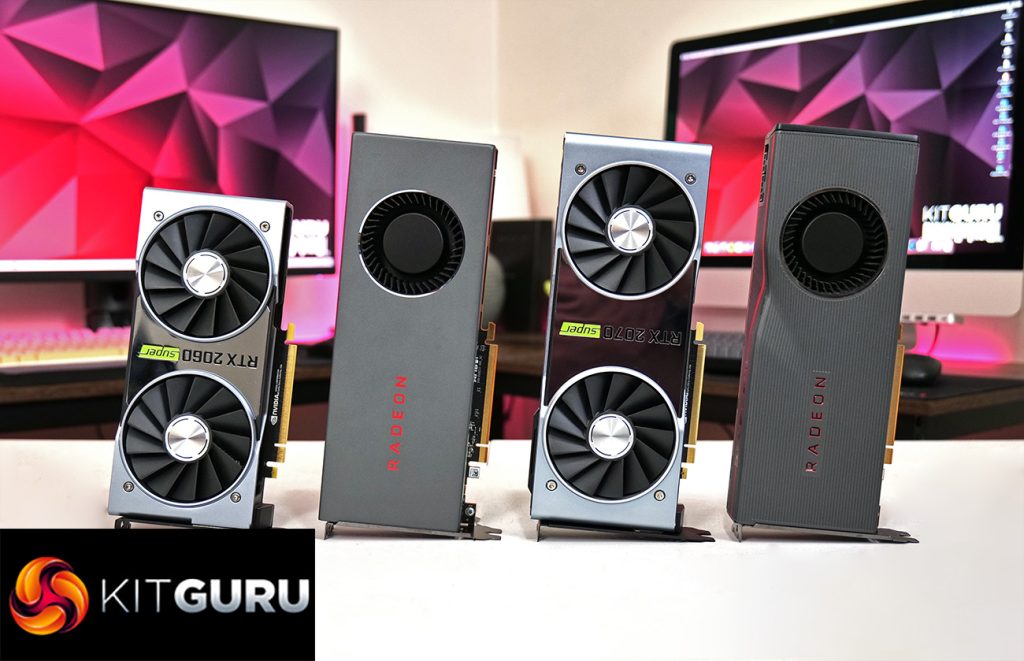That brings us to the end of this GPU revisit article. We set out with no agenda in regards to this testing – two and a half years on, I just wanted to see exactly how things lie between Nvidia's RTX Super GPUs, when compared head-to-head with AMD's first generation RDNA graphics cards.
Firstly, and arguably most importantly, it is clear from this testing that all four GPUs tested remain very viable options for 1080p and 1440p gaming as we head into 2022. In fact, if you bought one of these GPUs when they were actually available at their respective MSRPs, then I bet you are feeling very good about your purchase right now, considering all the weak launches and absurd GPU prices we have seen in 2021.
Still, we can draw some conclusions from the data shown in this article. The RTX 2070 Super, for instance, is clearly the fastest GPU of the bunch, but we would expect that considering it was the most expensive back at launch. Arguably more impressive is that the RX 5700 XT pushes it so close, despite launching at almost £100 (or 20%) cheaper – the RTX 2070 Super is only 8% faster on average at 1440p despite its much higher price-tag.
When comparing the RX 5700 XT and the RTX 2060 Super, which both launched at £379, we can see a clear win for Team Red – the RX 5700 XT is faster in all but two of the games we tested today, at either 1080p or 1440p, and is on average 10% and 11% faster, respectively.
Interestingly, we could have seen the numbers favour AMD even more, but I actually noticed a couple of scenarios where either game updates or driver optimisations appear to have won back some performance for Nvidia. In my RX 6600 XT review for instance, the RX 5700 XT proved faster than the RTX 2070 Super in Assassin's Creed Valhalla and F1 2021. In this testing today, the 2070 Super is about level with the 5700 XT in Assassin's Creed, but faster in F1 2021.
We can't end this revisit without mentioning DLSS, however. Back in mid-2019, the RTX featureset as a whole was still a bit of a gamble, and I know many are still not convinced about hardware accelerated ray tracing performance even as we head into 2022. DLSS, on the other hand, has gone from strength to strength and is now a key feature for RTX GPUs. The technology is in a wide array of games and more are announced practically every week, so we have to give Nvidia credit for sticking with, and improving, this technology after its rocky start.
When using the technology with the 2060 Super and 2070 Super as part of today's testing, we saw performance boosts from 28-39% at 1440p when using DLSS Quality mode, with scope for further gains if opting for either the Balanced or Performance modes. It really is quite a game changer – in a couple of years, say the 2060 Super can't deliver a locked 60FPS at 1440p like it can in most games today, it's great to know that all you would need to do is flick the DLSS switch to win back a significant chunk of performance, with – in most cases – very little sacrificed in terms of image quality.
That is it for this revisit article, and I hope you found it interesting to look back on the performance of these four GPUs over a wide range of games. If you want us to look at something similar with a particular GPU (or GPUs…), do let us know down in the comments or over on Facebook.
Discuss on our Facebook page HERE.
KitGuru says: No doubt about it, if you have any of the four GPUs tested today, you are in a very good spot for either 1080p or 1440p gaming for years to come.
 KitGuru KitGuru.net – Tech News | Hardware News | Hardware Reviews | IOS | Mobile | Gaming | Graphics Cards
KitGuru KitGuru.net – Tech News | Hardware News | Hardware Reviews | IOS | Mobile | Gaming | Graphics Cards



